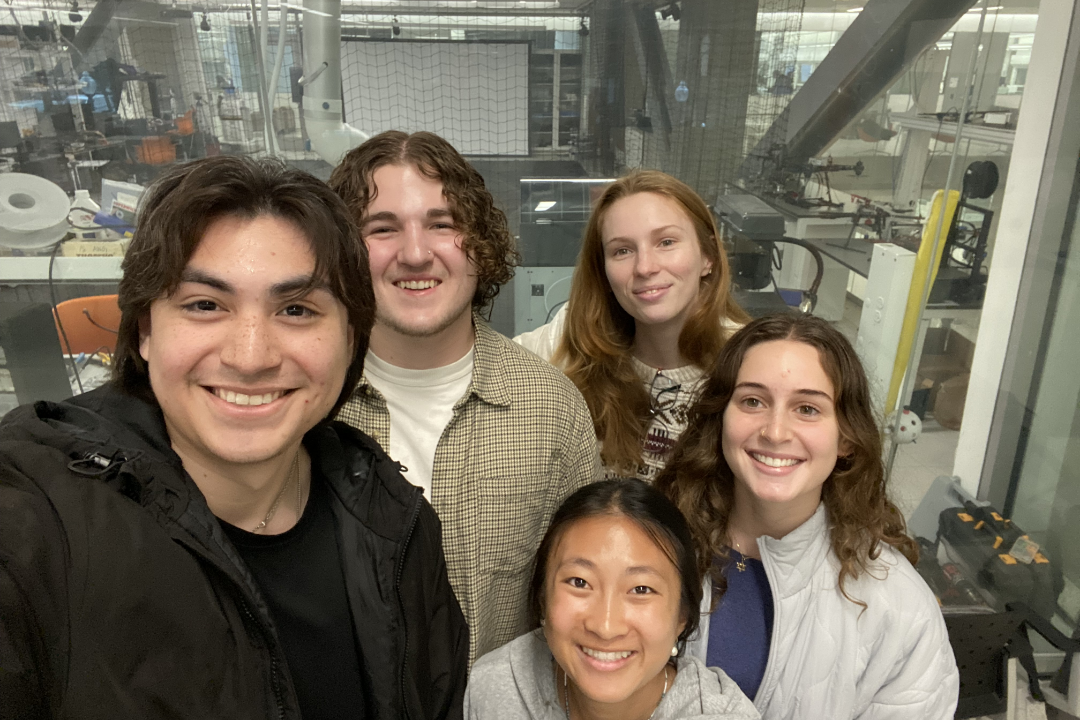What problem does this project tackle?
The African Elephant population faces significant and devastating harm from poachers throughout the continent. In fact, according to the International Fund for Animal Welfare, over 90% of the African Elephant population has been killed due to poaching over the last 100 years. This is a significant issue in southern Africa for nature and wildlife preserves, so through the development of our Dumbo Fliers blimp drone, we will aid park authorities in monitoring elephant herds to catch and prevent poaching of this vulnerable species. This will help prevent the killing of these animals and aid parks in creating a safer and more secure preservation effort for the species. We also hope that through the success of our project, the design will be implemented in numerous countries in Africa to aid in preventing poaching throughout the continent.
Who experiences this problem in the world?
The main victim of African Elephant poaching is of course the wildlife species being killed. However, extending into the human world, communities dependent on elephant populations for tourism revenue also suffer as these populations are harmed. Furthermore, poaching is a violent crime and rangers or even poachers themselves can be harmed or killed in the process. African Elephants are endangered and helping to preserve their safety is necessary for others to view and enjoy this species, in addition to maintaining a balanced and thriving ecosystem for both humans and the natural world.
Why is this problem important?
The issue of poaching rapidly decreases the number of endangered elephant species throughout Africa who are integral to local vegetation and communities. Any visual deterrent to the poachers would help protect the elephants from fatal encounters with them and help protect the beautiful wildlife in the area. These poachers are targeting elephants for illegal ivory trading and thus contributing to and sustaining international organized crime. Furthermore, the extinction of the elephant population from communities in Africa limits the tourism revenue for those communities and heavily impacts their economies. By using a large visual indicator of surveillance, the illegal killing of elephants will hopefully slow, preserving the ecological system and local communities.
What specific technical problems did you encounter?
Our team has faced several technical challenges throughout our project. An initial obstacle was our customer’s preference toward using only American-made components, despite many essential parts such as solar panels, batteries, cameras, and drone components being either unavailable domestically or significantly more expensive than foreign alternatives. Additionally, our client had some familiarity with engineering, and so came to the project with design preferences in mind. In his initial design, he envisioned using solar panels to provide the drone with "limitless energy," but hadn’t considered their poor weight-to-energy ratio or the fact that most operations would occur at night. He also favored solid-state batteries, which are expensive and not widely available. After consulting with the team, he was convinced to approve alternatives that better met the project’s constraints.
Beyond customer-related challenges, determining the blimp's size requirements proved somewhat difficult as we lacked constraints. Total blimp weight dictated the blimp’s size, which in turn affected the amount of thrust required to operate at mission conditions, which consequently affected power requirements, which then altered related components and their weights; creating an iterative cycle. Finalizing our deliverable was another challenge. After consulting with our course instructor, Professor Shooter, our customer approved the use of foreign components in the prototype provided we also supply specifications for American-made alternatives he could source for later versions. Due to funding constraints, we also chose to construct everything except the envelope. We built the payload box, landing gear, camera, and propellers along with the rear steering array to demonstrate the functionality, as choosing to construct the full 15-foot blimp would also have been impossible with the limited space we are given to showcase our design in the capstone exhibition.
Describe the coolest thing about your project:
The coolest thing about our design is our flight time longevity. Traditional drones used for poaching surveillance typically have a lasting flight time of 45 minutes to an hour, while our blimp drone design boasts an extensive flight time of 4 ½ hours in forward motion and 7 ½ hours hovering at the high end. This is achieved by utilizing a lifting gas such as helium to provide constant passive lift in the form of helium’s buoyant effects. By utilizing buoyancy, we are able to greatly decrease the energy needs of our propulsion system such that the main power draw requirement will only be used in forward flight. Pair this with a low payload weight that minimizes our required buoyancy force thus decreasing the envelope size and its drag. The result is a long-lasting mobile surveillance drone perfect to monitor possible elephant poachers.
Describe any sustainable design considerations driving your solution:
Our project being commissioned by a sustainable non-profit organization, like the Blue Orb Foundation, has put sustainability at the forefront of our design considerations. Initially, the team created a design that includes an onboard flexible solar panel so that the blimp drone can intake passive renewable energy from the Sun. However, upon further analysis the weight of the needed panels proved counterproductive to energy efficiency, instead we now consider a solution that utilizes a grounded solar panel that will perpetually recharge a reusable LiPo battery pack to be used on missions. In this way we make our product more sustainable and reduce waste!
Project Name: Dumbo Flyers
Team Members: Adam Belmontes,Yasmin Pang, Shelby Pullen, Abe Thayer, Tamar Todd
Team Mentors: Design/Build/Fly Team
Team Sponsors: Anthony Bennet, Blue Orb Foundation


